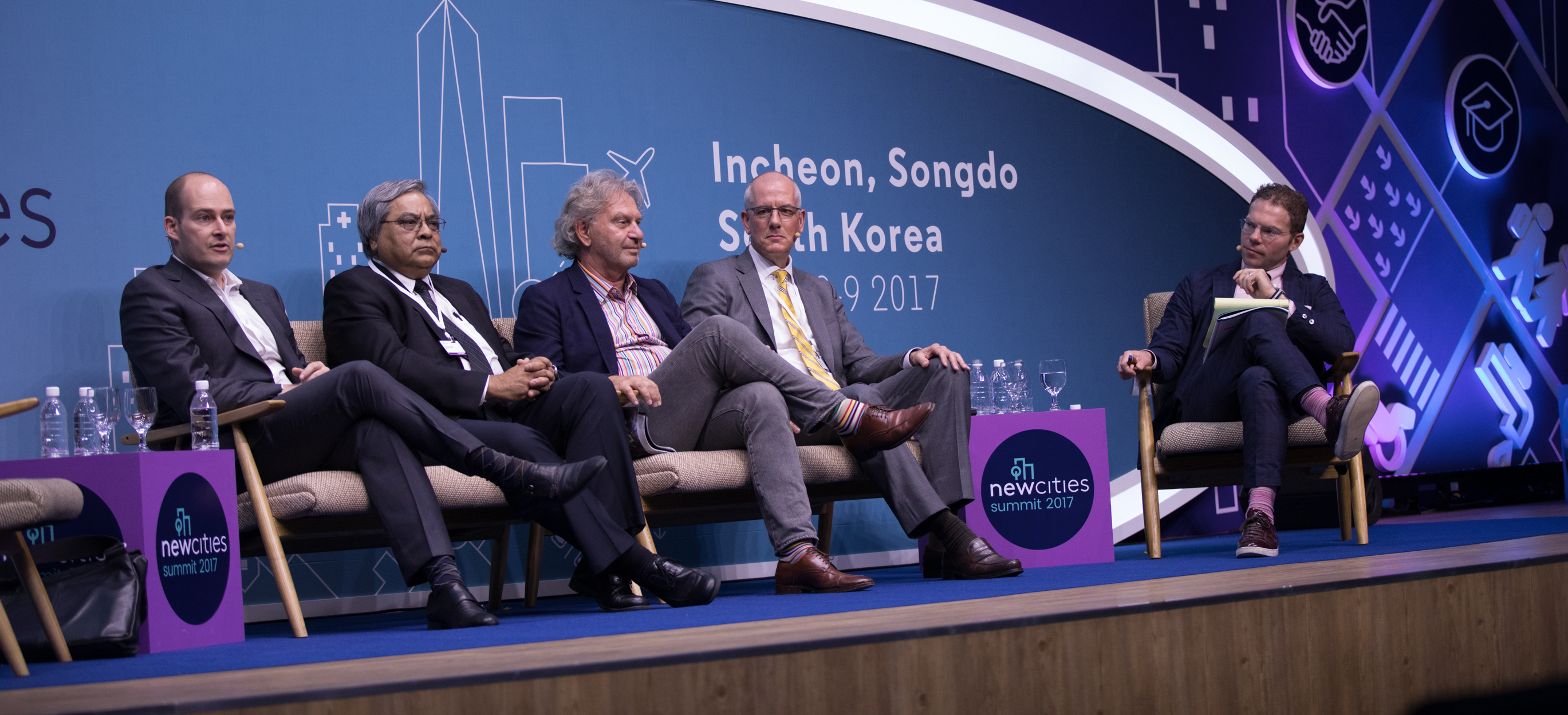
The Story of Songdo, the Smart City of the Future
July 19, 2017 — Blog
This post is part of our Thriving Cities discussion series, following the sixth edition of the NewCities Summit in Incheon Songdo, South Korea in June 2017.
The master plan for Songdo International Business District (IBD) has set new standards in urban wellbeing and sustainability, both of which were at the heart of design process from the outset. In this keynote conversation, some of the leading minds behind Songdo came together to share their insights into the development of one of the world’s landmark greenfield cities.
Tom Murcott, President and CEO, Gale International Strategic Advisory Services, opened the conversation recalling a helicopter trip over the freshly reclaimed land that would soon become Songdo, part of a reconnaissance mission as Incheon was courting American companies to design the central business district.
The conversation then moved towards the human understanding of cities as Elie Gamburg, Director at Kohn Pedersen Fox, argued that, contrary to popular belief, cities are not an entirely natural creation process. Many neighbourhoods in old cities such as London are, in fact, planned areas. From these examples, he cited design details in Songdo that have lessons for existing cities, particularly for large open spaces. He added the walkability and quality of life are also important lessons for all urban developments.
Panel moderator Greg Lindsay, Senior Fellow at NewCities, asked speakers whether there can be a universal code for city building. Gamburg noted that Songdo is continuously a work in progress with much left to do. Ashok Raiji, Principal, Americas Property Business Leader at Arup agreed with this point noting that while Songdo is not a perfect city, the results remain astonishing.
Raiji detailed the original vision of the city’s design, revealing that the core concept was to have good design throughout the city with new ideas introduced over time. For example, when the design team became aware of water stress levels in Korea, water preservation became a central point of design, with 60% of rainfall now collected and reused.
When prompted on Cisco’s decision to take part in Songdo’s development, Wim Elfrink, President at WPE Ventures Digitized Solutions and a former Cisco executive, said that it was clear from the beginning that the project would be a return of investment after seven to ten years.
Songdo has been held as an example for other cities, and indeed is already inspiring design in other parts of the world. Murcott mentioned Meiji Lake, a new city in China that is based on Songdo’s design. However, Meiji Lake was conceived while simultaneously considering the specific conditions of the local environment. Raiji agreed with this approach, and said a “cookie cutter” technique is not right, even if the steps taken in developing cities are almost identical.